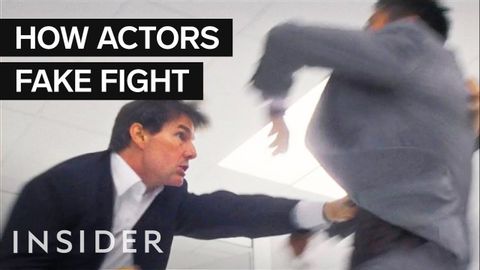看起來好痛!電影演員如何假裝打架? (How Actors Fake Fight In Movies)
Rong Chiang 發佈於 2018 年 09 月 11 日  沒有此條件下的單字
沒有此條件下的單字- v.t./i.棒;黏貼,張貼;堅持;伸出;忍受
- n. (c.)棍棒,棍枝,枝條
US /ˈʌltəmɪt/
・
UK /ˈʌltɪmət/
- adj.最終的;基本的;根本的;最好的;最終的;最大
- n.飛盤爭奪賽;極致;終極
US /prɪˈtɛnd/
・
UK /prɪ'tend/
- v.t./i.假裝;裝做
- adj.虛假的
- n. (c./u.)假裝
US /ˈkærəktɚ/
・
UK /'kærəktə(r)/
- n.角色,人物(故事,電影或戲劇中);字,字體;性格;特點;人物(一般用法);名譽;名聲
